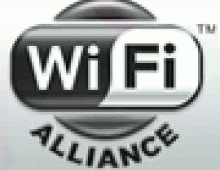
WiGig Releases Version 1.1 Specification, Sees Wireless Docking, USB, HDMI
The Wireless Gigabit Alliance (WiGig), the organization advancing the worldwide adoption and use of 60 GHz wireless technology and its applications, today announced the publication of its certification-ready multi-gigabit wireless specification.
The new version 1.1 specification addresses enhancements identified by member companies during the product development process. Soon WiGig members will be able to test their WiGig-based products to ensure interoperability within the ecosystem and provide end users with reliable solutions at product launch.
WiGig also today announced the publication of its WiGig Bus Extension (WBE), the WiGig Serial Extension (WSE) and the Wireless Display Extension (WDE) specifications, now available to Adopter members:
- The WiGig Bus Extension (WBE) can enable a wireless version of the PCI Express (PCIe) slots used to connect everything from video cards to hard drives. WBE is now a published specification available to members of the consortium.
- The Wireless Serial Extension (WSE) will provide high-speed serial communications link, enabling a wireless version of the newer USB 3.0 technology. This spec will be published in the second half of 2011.
- The Wireless Display Extension (WDE) governs how external monitors or TVs can be connected with wireless versions of HDMI and DisplayPort connectors. WiGig had been working with VESA, which develops DisplayPort, but now joined HDMI's group, too. WDE also will be published in the second half of 2011.
The technology also is an extension of traditional Wi-Fi networking, including elements such as Wi-Fi Direct for device-to-device connections.
Today's Wi-Fi technology uses 2.4GHz and 5GHz radio spectrum; the 60GHz band permits faster data transfer but is limited to shorter range. The 60GHz band, like the other two, is unlicensed.
The 60GHz technology is a directional wireless technology that uses thirty-two antennas to pick the best direct path from, a wireless access point to a device. However, this is an in-room technology, so don't expect a connection on the other side of the house.
The Wi-Fi Alliance is also expeted to releaese the longer-range 802.11ac wireless specifications with a data transfer rate of 1Gbps next year.
WiGig also today announced the publication of its WiGig Bus Extension (WBE), the WiGig Serial Extension (WSE) and the Wireless Display Extension (WDE) specifications, now available to Adopter members:
- The WiGig Bus Extension (WBE) can enable a wireless version of the PCI Express (PCIe) slots used to connect everything from video cards to hard drives. WBE is now a published specification available to members of the consortium.
- The Wireless Serial Extension (WSE) will provide high-speed serial communications link, enabling a wireless version of the newer USB 3.0 technology. This spec will be published in the second half of 2011.
- The Wireless Display Extension (WDE) governs how external monitors or TVs can be connected with wireless versions of HDMI and DisplayPort connectors. WiGig had been working with VESA, which develops DisplayPort, but now joined HDMI's group, too. WDE also will be published in the second half of 2011.
The technology also is an extension of traditional Wi-Fi networking, including elements such as Wi-Fi Direct for device-to-device connections.
Today's Wi-Fi technology uses 2.4GHz and 5GHz radio spectrum; the 60GHz band permits faster data transfer but is limited to shorter range. The 60GHz band, like the other two, is unlicensed.
The 60GHz technology is a directional wireless technology that uses thirty-two antennas to pick the best direct path from, a wireless access point to a device. However, this is an in-room technology, so don't expect a connection on the other side of the house.
The Wi-Fi Alliance is also expeted to releaese the longer-range 802.11ac wireless specifications with a data transfer rate of 1Gbps next year.



















